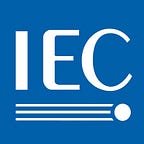Will robots beat humans at soccer?
The future of the planet is being played out on soccer pitches.
It may not rival the FIFA World Cup in the public imagination just yet, but the international tournament that has just wrapped up in Montreal plans one day soon to become the showcase for the world’s best soccer players. Teams from 35 countries have competed in this year’s RoboCup, including 5 000 robots and 4 000 humans.
The name RoboCup is a contraction of the competition’s full name, the Robot Soccer World Cup. The event has been running since 1997, inspired in part by the victory in the same year of IBM’s Deep Blue programme over the then world chess champion, Gary Kasparov.
Just as Deep Blue challenged the chess establishment, the organizers of the RoboCup tournament have thrown down the gauntlet to the international governing body of association football. The official goal of the competition states, “By the middle of the 21st century, a team of fully autonomous humanoid robot soccer players shall win a soccer game, complying with the official rules of FIFA, against the winner of the most recent World Cup.”
It promotes robotics and artificial intelligence by offering a formidable challenge for scientists in the framework of a publicly appealing competition. The robots must be able to control a football, communicate with their teammates and outmanoeuvre their opponents.
Unlike the human version of the World Cup, the RoboCup includes contests for different robot sizes. Unable to run or jump, the humanoid robots still have a fair way to go before they can challenge the likes of Messi and Ronaldo, although they do get up more quickly than their human counterparts when they fall down.
Elsewhere, the mid-size robots were more impressive, as they fought for position, shot and blocked goal attempts. Here are the highlights of the mid-league final between a Dutch team from the Eindhoven University of Technology and Portugal’s University of Aveiro:
The RoboCup organizers are hoping to push the state-of-the-art by setting an ambitious, long-term target. The benefit to society will not be the world beating robot footballers, but the technology advances that are made along the way that can be used for more useful purposes.
IEC produces International Standards for many of the technologies that robots incorporate including sensors, batteries, and semiconductors. The Joint Technical Committee of IEC and ISO on information technology (ISO/IEC JTC 1) and several of its subcommittees (SCs) prepare International Standards which contribute towards artificial intelligence.
Given the rapid developments in AI across many industries, a new SC on artificial intelligence, ISO/IEC JTC 1/SC 42, was set up in 2017 with the mandate of providing standardization in the area of AI as well as guidance to other committees developing AI applications.
AI depends on the gathering, analysis and sharing of great volumes of data which are exchanged between applications as well as with external service providers. This makes it equally possible for an assistant-enabled device to turn on the oven or for a manufacturer to improve the safety features on its cars.
ISO/IEC JTC 1/SC 41 develops International Standards for the internet of things (IoT), making connectivity possible, while ISO/IEC JTC 1/SC 38 addresses the standardization of cloud computing for the storage and retrieval of data.
In addition, AI technologies rely upon IEC Standards for hardware components, such as touchscreens (IEC TC 110) and audio, video and multimedia systems and equipment (IEC TC 100).
